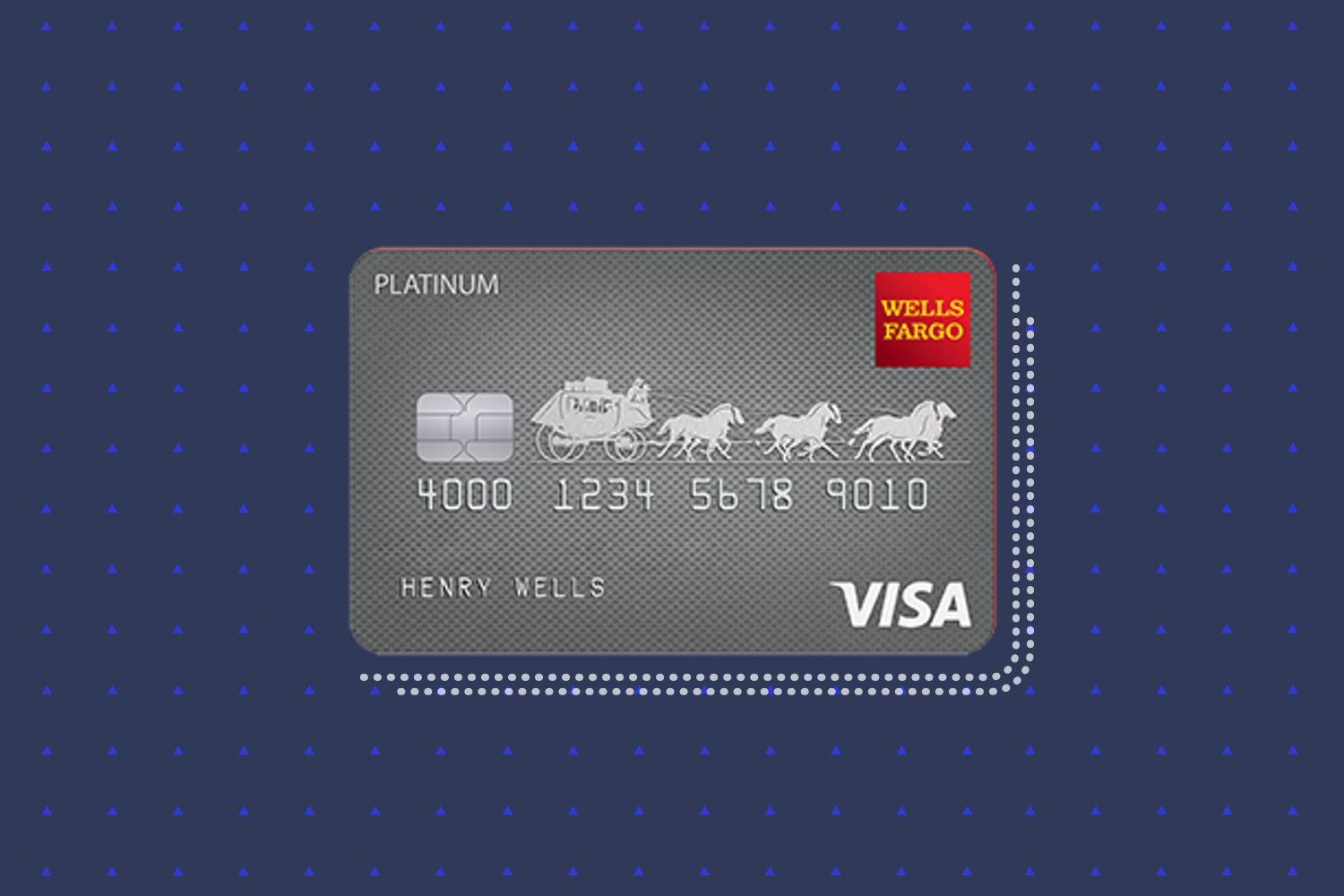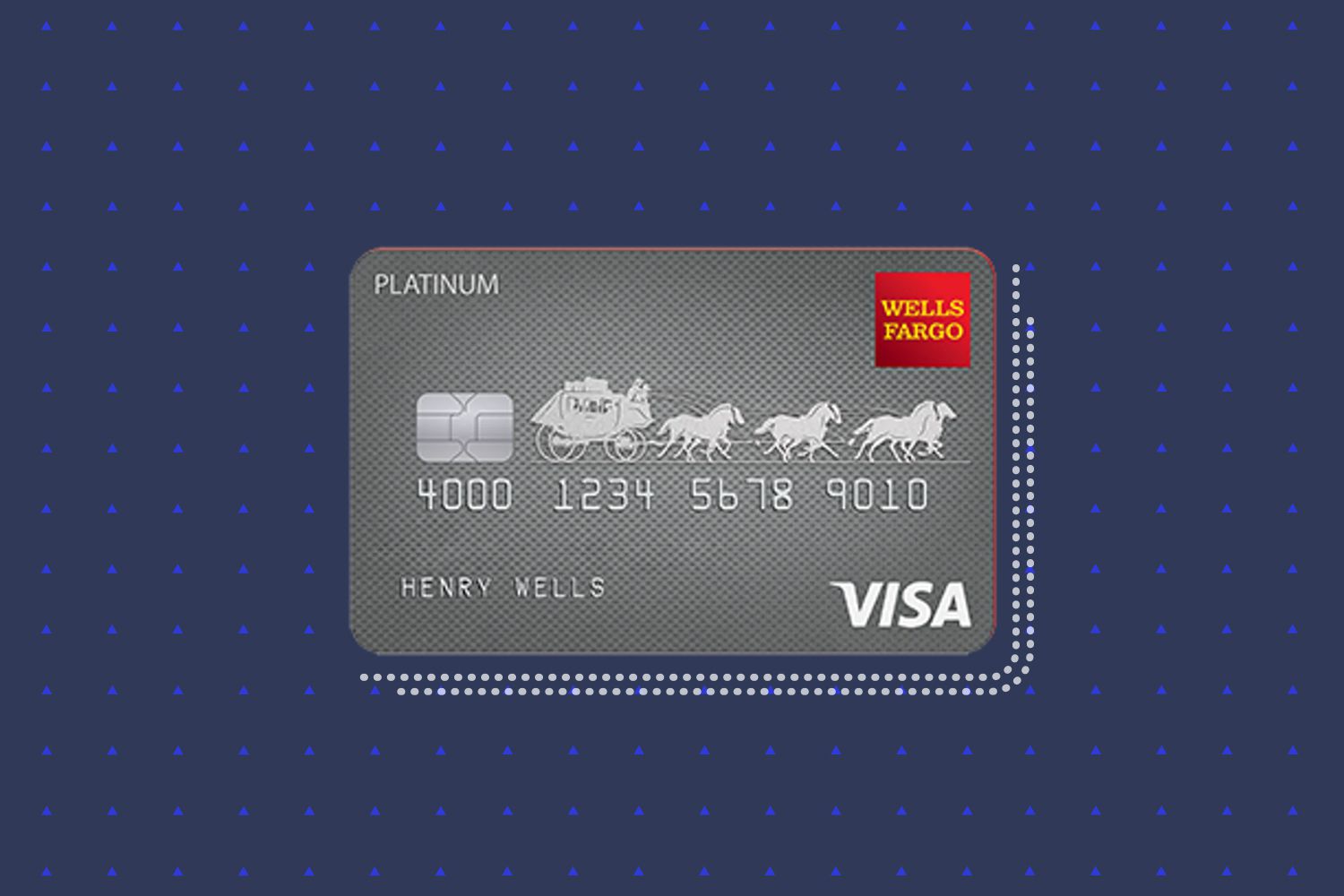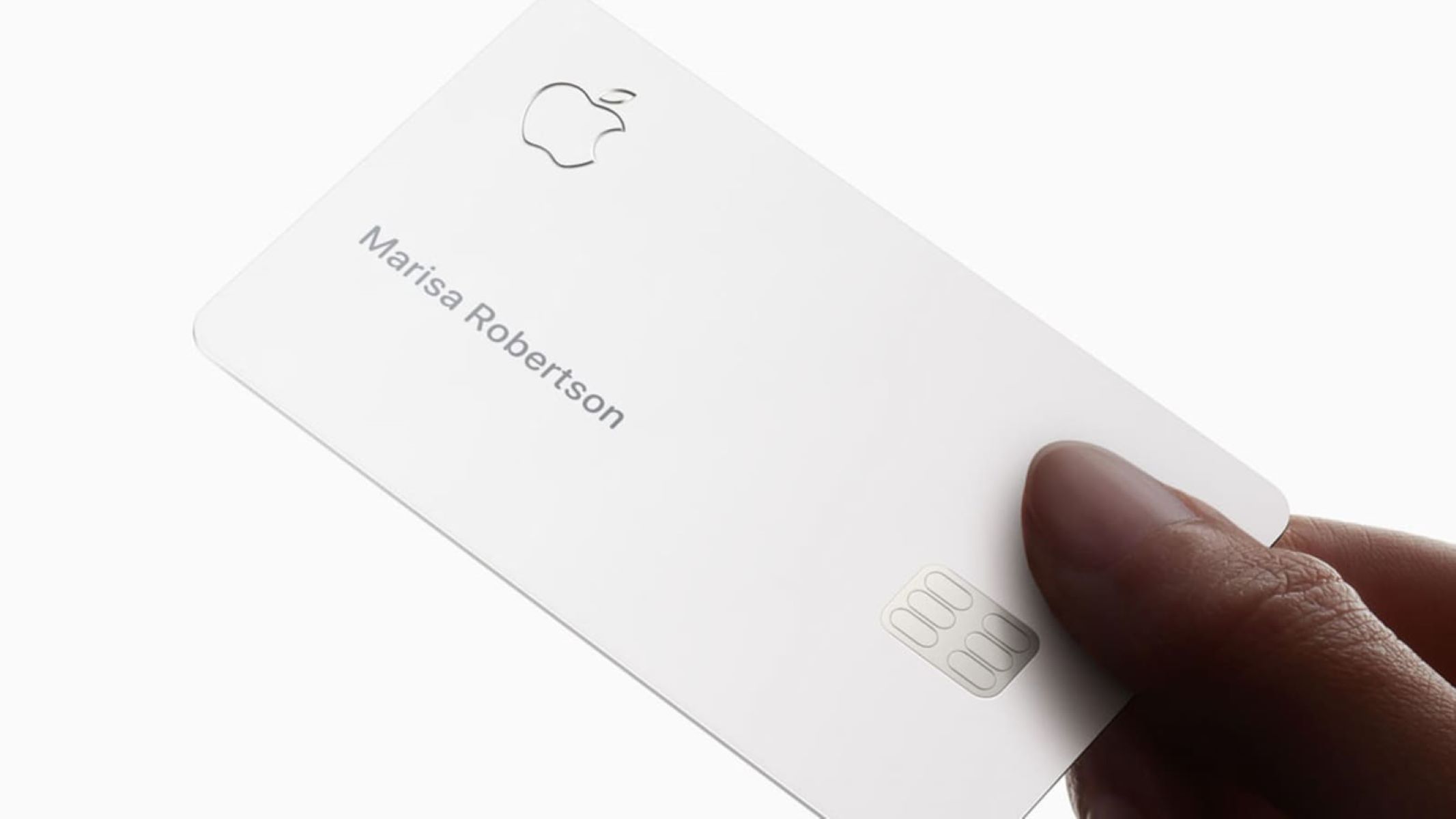Home>Finance>How Long Does It Take For A Wells Fargo Secured Card To Be Upgraded To An Unsecured Card?


Finance
How Long Does It Take For A Wells Fargo Secured Card To Be Upgraded To An Unsecured Card?
Published: March 2, 2024
Learn about the process and timeline for upgrading a Wells Fargo secured card to an unsecured card. Find out how this can impact your finances.
(Many of the links in this article redirect to a specific reviewed product. Your purchase of these products through affiliate links helps to generate commission for LiveWell, at no extra cost. Learn more)
Table of Contents
Introduction
When it comes to building or rebuilding credit, secured credit cards can be invaluable financial tools. These cards are designed to help individuals establish or improve their credit history by requiring a security deposit, which also serves as the credit limit. This mitigates the risk for the card issuer and provides an opportunity for individuals with limited or damaged credit to access a line of credit.
Understanding the features, benefits, and potential for advancement with secured credit cards is crucial for those seeking to strengthen their financial standing. In this article, we will delve into the specifics of secured credit cards, with a focus on the Wells Fargo Secured Card. We will explore the process of upgrading a Wells Fargo Secured Card to an unsecured card, the factors that influence this transition, and the typical timeframe for such an upgrade to occur.
By gaining a comprehensive understanding of these aspects, individuals can make informed decisions about their credit-building journey and work towards achieving a stronger financial foundation. Whether you are considering applying for a Wells Fargo Secured Card or already have one and aspire to transition to an unsecured card, this guide will provide valuable insights to support your financial aspirations.
Understanding Secured Credit Cards
Secured credit cards are specifically designed for individuals who have limited credit history, a low credit score, or a history of financial challenges. Unlike traditional unsecured credit cards, secured cards require the cardholder to provide a security deposit, which then determines the credit limit. This deposit serves as collateral and mitigates the risk for the card issuer, making it possible for individuals with less-than-ideal credit profiles to obtain a line of credit.
One of the key advantages of secured credit cards is their ability to help individuals establish or rebuild their credit. By responsibly using a secured card and making timely payments, cardholders can demonstrate their creditworthiness and improve their credit score over time. This can open doors to better financial opportunities, such as qualifying for unsecured credit cards, obtaining favorable loan terms, and even securing lower interest rates on future credit products.
Additionally, secured credit cards often come with features and benefits similar to those of traditional credit cards, including the ability to make purchases, build a payment history, and access online account management tools. Some secured cards may also offer perks such as cash back rewards or other incentives, providing cardholders with added value as they work on enhancing their credit profile.
It’s important to note that while secured credit cards require a security deposit, they are not prepaid cards. The security deposit is held by the card issuer as collateral and does not serve as a source of payment for charges made with the card. Cardholders are still required to make monthly payments on their secured card balances, and failure to do so can result in negative effects on their credit history.
Understanding the fundamental role and benefits of secured credit cards lays the groundwork for individuals to make informed decisions about their financial journey. With this knowledge, individuals can explore the specific features and terms of the Wells Fargo Secured Card and gain insights into the process of transitioning from a secured card to an unsecured one.
Wells Fargo Secured Card
The Wells Fargo Secured Card is a notable offering in the realm of secured credit cards, providing individuals with an opportunity to build or rebuild their credit under the umbrella of a well-established financial institution. This card is designed for individuals who are looking to strengthen their credit profile and may not qualify for traditional unsecured credit cards due to limited credit history or previous financial challenges.
Key features of the Wells Fargo Secured Card include the requirement of a security deposit, which then determines the card’s credit limit. The minimum security deposit amount is relatively low, making it accessible to a wide range of individuals seeking to establish or improve their credit. Cardholders can make purchases with the secured card and are required to make monthly payments, just like with a traditional credit card.
One distinguishing aspect of the Wells Fargo Secured Card is its potential for advancement. As cardholders demonstrate responsible credit usage and make timely payments, they may become eligible for an upgrade to an unsecured credit card. This transition signifies a significant milestone in their credit journey, as it reflects improved creditworthiness and the potential to access a broader range of financial products and services.
Furthermore, the Wells Fargo Secured Card provides cardholders with access to online account management tools, allowing them to monitor their spending, track payments, and stay informed about their credit usage. This level of transparency and control empowers individuals to actively manage their credit and make strides towards achieving their financial goals.
By offering a pathway to credit improvement and potential advancement to an unsecured card, the Wells Fargo Secured Card serves as a valuable tool for individuals seeking to enhance their financial standing. In the following sections, we will delve into the process of upgrading from a Wells Fargo Secured Card to an unsecured card, exploring the factors that influence this transition and the typical timeframe for such an upgrade to occur.
Upgrading to an Unsecured Card
One of the key attractions of the Wells Fargo Secured Card is the potential for cardholders to transition from a secured card to an unsecured credit card. This advancement signifies a significant milestone in an individual’s credit journey, as it reflects improved creditworthiness and the ability to access a broader range of financial products and services without the need for a security deposit.
The process of upgrading from a Wells Fargo Secured Card to an unsecured card typically involves a review of the cardholder’s credit history, payment behavior, and overall financial standing. When considering a cardholder for an unsecured card, Wells Fargo assesses the individual’s creditworthiness based on factors such as payment history, credit utilization, and the presence of any negative marks on the credit report.
Cardholders who have demonstrated responsible credit management, such as making timely payments, keeping credit utilization low, and maintaining a positive payment history, are more likely to be considered for an upgrade to an unsecured card. Additionally, individuals who have shown financial stability and improvement in their overall credit profile may also be prime candidates for this transition.
It’s important for cardholders to continue practicing good credit habits while holding a Wells Fargo Secured Card, as this can significantly impact their eligibility for an upgrade. By consistently managing their credit responsibly and staying informed about their credit standing, individuals can position themselves favorably for the potential transition to an unsecured card.
Upon meeting the criteria for an unsecured card, cardholders may receive an offer from Wells Fargo to upgrade their secured card. This offer may come with details about the new unsecured card’s features, benefits, and any changes to the account terms. If the cardholder accepts the offer, their Wells Fargo Secured Card will be upgraded to an unsecured card, and the security deposit will be refunded, provided that the account is in good standing.
By understanding the process and considerations involved in upgrading from a Wells Fargo Secured Card to an unsecured card, individuals can proactively work towards achieving this financial milestone. In the subsequent section, we will explore the key factors that influence the transition from a secured card to an unsecured card and the timeframe typically associated with this progression.
Factors Affecting Upgrading
Several key factors play a crucial role in determining a cardholder’s eligibility for upgrading from a Wells Fargo Secured Card to an unsecured credit card. These factors are carefully evaluated by Wells Fargo to assess the cardholder’s creditworthiness and financial stability before extending an offer for an unsecured card.
- Payment History: Timely payments on the Wells Fargo Secured Card are a significant indicator of responsible credit management. A positive payment history demonstrates reliability and can positively influence the decision to upgrade to an unsecured card.
- Credit Utilization: The utilization of available credit is another critical factor. Maintaining a low credit utilization ratio, which reflects the amount of credit used in relation to the total credit available, showcases prudent credit usage and financial discipline.
- Credit Score Improvement: Cardholders who have taken proactive steps to improve their credit score during the tenure of holding the secured card may be viewed favorably for an upgrade. Positive changes in the credit score reflect responsible credit behavior and financial progress.
- Financial Stability: Wells Fargo may consider the overall financial stability of the cardholder, including factors such as employment status, income stability, and the absence of significant negative financial events, when evaluating the potential for an upgrade.
- Account Management: Active and responsible management of the Wells Fargo Secured Card account, including regular monitoring, staying informed about credit standing, and addressing any discrepancies or issues, can positively influence the decision-making process for an upgrade.
It’s important for cardholders to be mindful of these factors and actively work towards maintaining a positive credit profile. By demonstrating responsible credit behavior, staying informed about their credit standing, and making strides towards financial stability, cardholders can enhance their prospects for transitioning from a secured card to an unsecured card.
Understanding the key factors that influence the upgrading process empowers individuals to take proactive steps in managing their credit and working towards achieving an unsecured credit card, thereby expanding their financial opportunities and strengthening their credit foundation.
Timeframe for Upgrade
While the timeframe for upgrading from a Wells Fargo Secured Card to an unsecured credit card can vary based on individual circumstances, there are general guidelines that can provide insight into the typical duration of this transition. Cardholders who are actively working towards improving their credit profile and demonstrating responsible credit management may wonder when they can expect to be considered for an upgrade to an unsecured card.
It’s important to note that there is no predefined timeline for the upgrade process, as each cardholder’s credit journey is unique and influenced by various factors such as payment history, credit utilization, and overall financial stability. However, as a general rule of thumb, many individuals may become eligible for consideration for an unsecured card upgrade after approximately 12 to 18 months of responsible credit usage with the Wells Fargo Secured Card.
During this timeframe, cardholders are encouraged to focus on maintaining a positive payment history, keeping credit utilization low, and actively monitoring their credit standing. By consistently practicing good credit habits and staying informed about their financial progress, individuals can position themselves favorably for potential advancement to an unsecured card.
It’s important to keep in mind that the decision to upgrade a secured card to an unsecured card ultimately rests with Wells Fargo and is based on a comprehensive assessment of the cardholder’s creditworthiness and financial stability. Cardholders who have demonstrated consistent improvement in their credit profile and have maintained a positive standing with their secured card are more likely to be considered for an upgrade.
Upon meeting the criteria for an unsecured card, cardholders may receive an offer from Wells Fargo to transition their secured card to an unsecured card. This offer typically includes details about the new card’s features, benefits, and any changes to the account terms. Upon acceptance of the offer, the Wells Fargo Secured Card will be upgraded to an unsecured card, and the security deposit will be refunded, provided that the account is in good standing.
Understanding the general timeframe for the upgrade process provides cardholders with a sense of direction as they work towards achieving an unsecured credit card. By maintaining a proactive approach to credit management and staying committed to responsible financial practices, individuals can position themselves for potential advancement within a reasonable timeframe.
Conclusion
The journey from a Wells Fargo Secured Card to an unsecured credit card represents a significant achievement for individuals seeking to build or rebuild their credit. This transition signifies not only the potential for increased financial flexibility but also the recognition of improved creditworthiness and responsible credit management. Understanding the process of upgrading from a secured card to an unsecured card, along with the factors influencing this progression, empowers individuals to take proactive steps towards achieving this financial milestone.
Throughout this guide, we have explored the fundamental role of secured credit cards in helping individuals establish or improve their credit history. The Wells Fargo Secured Card, with its accessible security deposit requirement and potential for advancement, serves as a valuable tool for individuals navigating their credit journey. By responsibly using the secured card, actively managing their credit, and demonstrating positive credit behavior, cardholders can position themselves for potential consideration for an upgrade to an unsecured card.
Key factors such as payment history, credit utilization, credit score improvement, and overall financial stability play a pivotal role in determining a cardholder’s eligibility for an upgrade. By focusing on these factors and maintaining a proactive approach to credit management, individuals can enhance their prospects for transitioning to an unsecured card within a reasonable timeframe.
While the specific timeframe for the upgrade process may vary based on individual circumstances, many cardholders may become eligible for consideration for an unsecured card upgrade after approximately 12 to 18 months of responsible credit usage with the Wells Fargo Secured Card. During this period, it is essential for cardholders to remain committed to sound credit practices and stay informed about their credit standing.
Upon meeting the criteria for an unsecured card, cardholders may receive an offer from Wells Fargo to transition their secured card to an unsecured card. This offer typically includes details about the new card’s features, benefits, and any changes to the account terms. Accepting this offer marks a significant milestone in the cardholder’s credit journey, as the secured card is upgraded to an unsecured card, and the security deposit is refunded, provided that the account is in good standing.
By staying informed about the upgrading process and actively managing their credit, individuals can work towards achieving an unsecured credit card, thereby expanding their financial opportunities and solidifying their credit foundation. The journey from a secured card to an unsecured card represents a tangible step towards financial progress and opens doors to a wider range of credit options and benefits, ultimately contributing to a stronger and more secure financial future.














